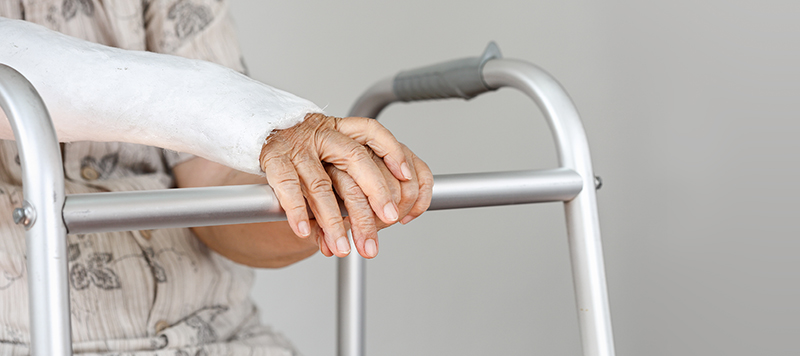Supporting dignity at the end of life: Practical everyday considerations
3073 0
A guest post written by Associate Professor Deidre Morgan, Occupational Therapist. This post was republished with permission from CareSearch.

We can all play a role in conserving the dignity of people with advanced incurable disease or simply as people age. In this blog, Assoc Professor Deidre Morgan explains many practical ways that health professionals and family members can help to conserve the person’s dignity and support their autonomy as they near the end of their life.
We hear a lot about the importance of ‘dying with dignity’ in the media. So how do we support the dignity of someone with advanced incurable disease? Proponents of Voluntary Assisted Dying (VAD) propose that VAD affords people the opportunity to die with dignity. This is achieved by enabling people with advanced disease to die at a time and in a place of their choosing. However, it is important we don’t conflate the concepts of autonomy and dignity. Dignity is a complex construct. It is also something that some people have difficulty describing exactly what it means to them. Importantly, there are many practical ways that health professionals and family members can help to conserve a person’s dignity, irrespective of whether they opt for VAD or receive more traditional end-of-life care.
What is dignity?
Professor Harvey Chochinov is a psychiatrist who has spent decades researching the concept of dignity in palliative care. He has identified the three key factors that affect a person’s sense of dignity.
- Distress about symptoms and loss of independence.
- How a person perceives and approaches their illness.
- How a person is treated by others. [1]
How do our actions conserve or compromise anothers dignity?
The ways in which health professionals and carers provide care can conserve or compromise a person’s dignity. Chochinov asks us to consider the ABCDs of Dignity in Care and how they may influence ways in which we provide care. [2] They are as follows.
Attitudes
- What unconscious assumptions do you have about the person, their care preferences?
- Are they accurate?
- What influences your assumptions?
Behaviour
- Be mindful of the tone during your interactions with a person.
- Speak respectfully and with kindness.
- Every small action of kindness matters.
Compassion
- Compassion can be conveyed by a look or gentle touch, getting down onto somebody’s eye level when you speak to them.
- Conveying compassion may be innate or something that develops over time with experience and support of mentors and role models.
Dialogue
- Be mindful of the tone of your communication.
- Seek to understand the person and their illness experience, not just their diagnosis.
Let's get practical
Ability to manage toileting needs is a very private activity that is rarely discussed with others or done in the presence of others. However, with increasing age or disease progression, people invariably require increasing assistance to manage very personal tasks like wiping oneself after a bowel motion. We interviewed palliative care patients about what would help to conserve their dignity with toileting. Here are their top tips.
- Make eye contact with me, introduce yourself and why you are here.
- Ask me what I want to be called.
- Ask me what aspects of care I want assistance with and what I want to try to do for myself.
- Ask me where it is OK or not OK to touch.
- Ask me how fast or how slow to touch me
- Continuously check in about the care you are providing … I might change my mind about what is OK or not OK. [3]
We can all play a role in conserving the dignity of people with advanced incurable disease or simply as people age, whether they be at home, hospital or in a residential aged care facility. Reflect on how you provide care. Consider:
- your attitudes towards the person and their care needs
- how you may practically provide care, and
- what the person actually wants.
Remember to check in often as a person’s preferences and needs can change quickly, even during care provision. In closing, a final word from Harvey Chochinov who asks us to take care that we don’t impose our perceptions of what is acceptable on the care recipient. He proposes that person-centred care should be based on The Platinum Rule – ‘doing unto patients as they would want done to themselves’, not what we think may be right for the person. [4] Stepping into the shoes of the person we are providing care for will help us to conserve their dignity and supports their autonomy, even in the face of deterioration.
Author

Deidre Morgan
Occupational Therapist
Associate Professor, College of Nursing & Health Sciences, Flinders University
References
- Chochinov HM, Hack T, McClement S, Kristjanson L, Harlos M. Dignity in the terminally ill: A developing empirical model. Soc Sci Med. 2002 Feb;54(3):433-43.
- Chochinov HM. Dignity and the essence of medicine: The A, B, C, and D of dignity conserving care. BMJ. 2007 Jul 28;335(7612):184-7.
- Morgan DD, Marston C, Barnard E, Farrow C. Conserving dignity and facilitating adaptation to dependency with intimate hygiene for people with advanced disease: A qualitative study. Palliat Med. 2021 Jul;35(7):1366-1377.
- Chochinov HM. The platinum rule: A new standard for person-centered care. J Palliat Med. 2022 Jun;25(6):854-856.